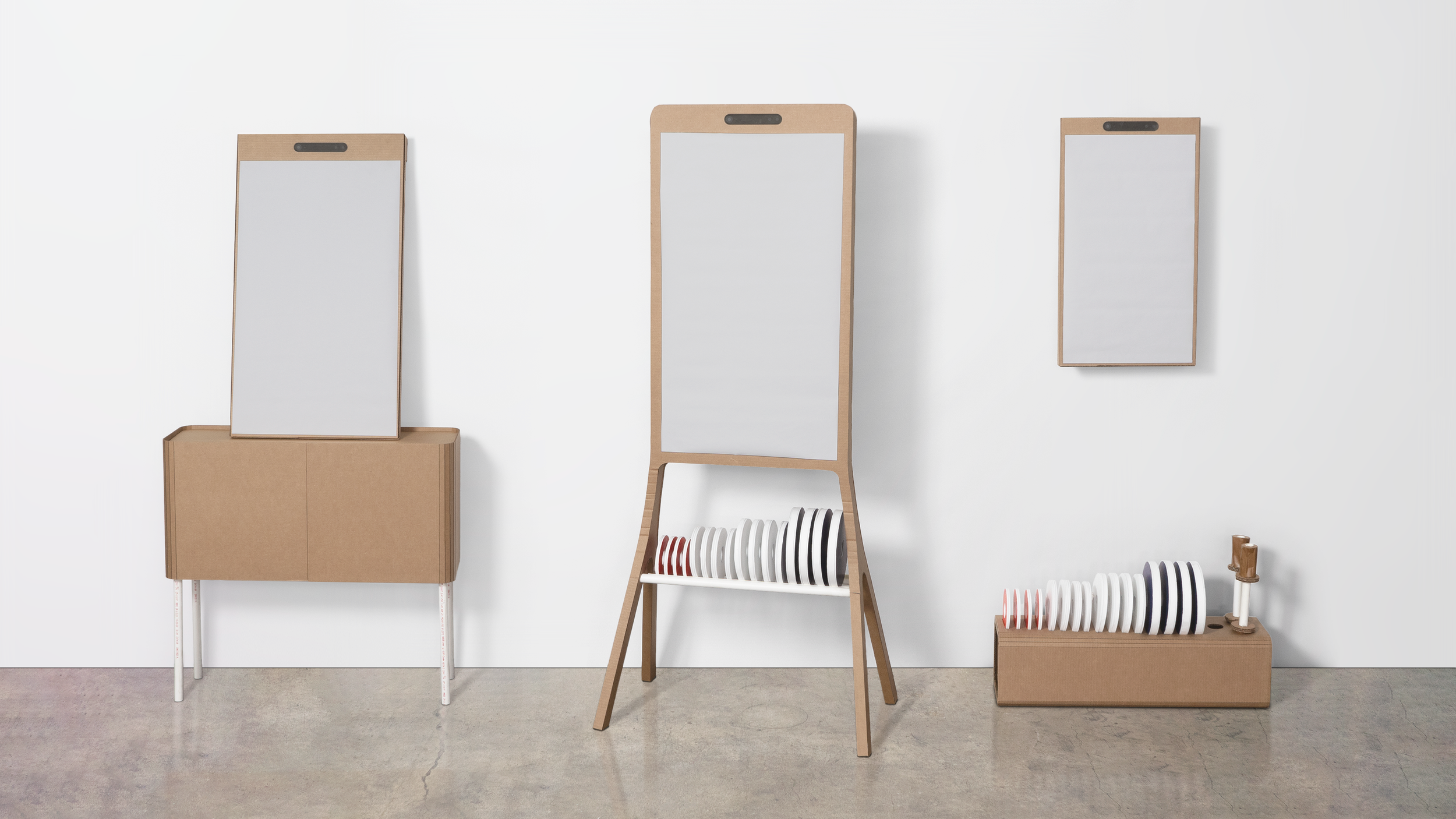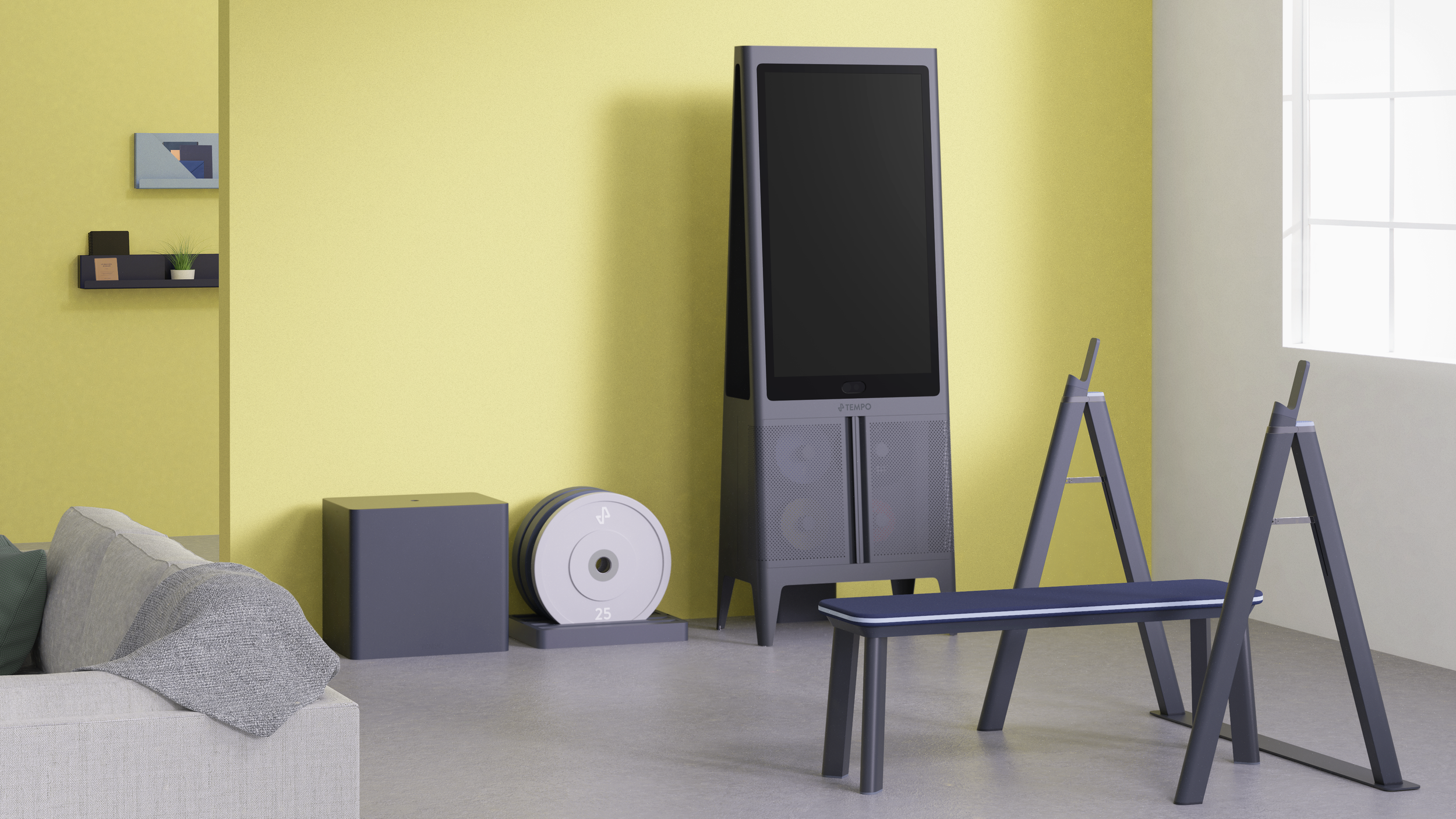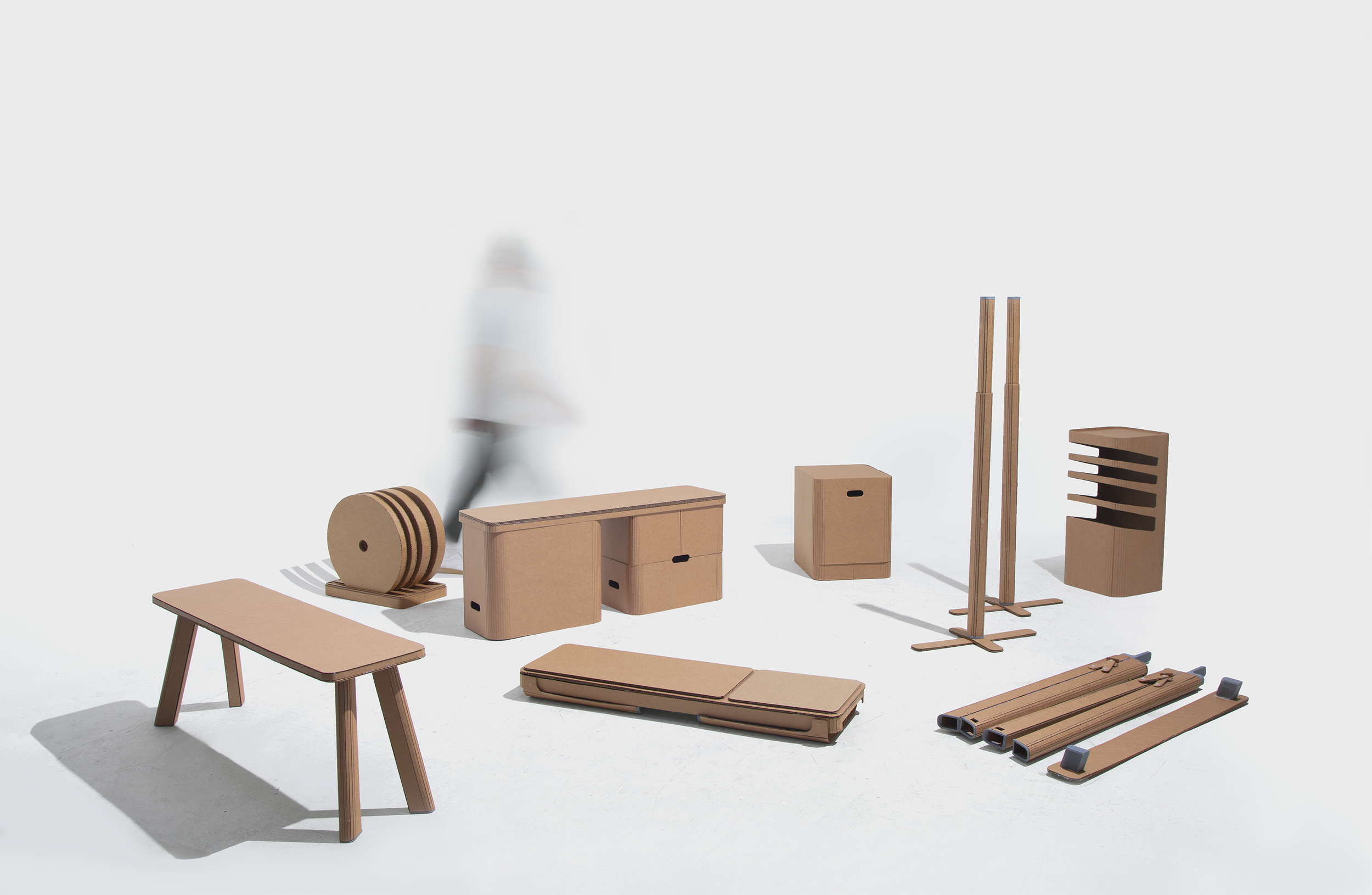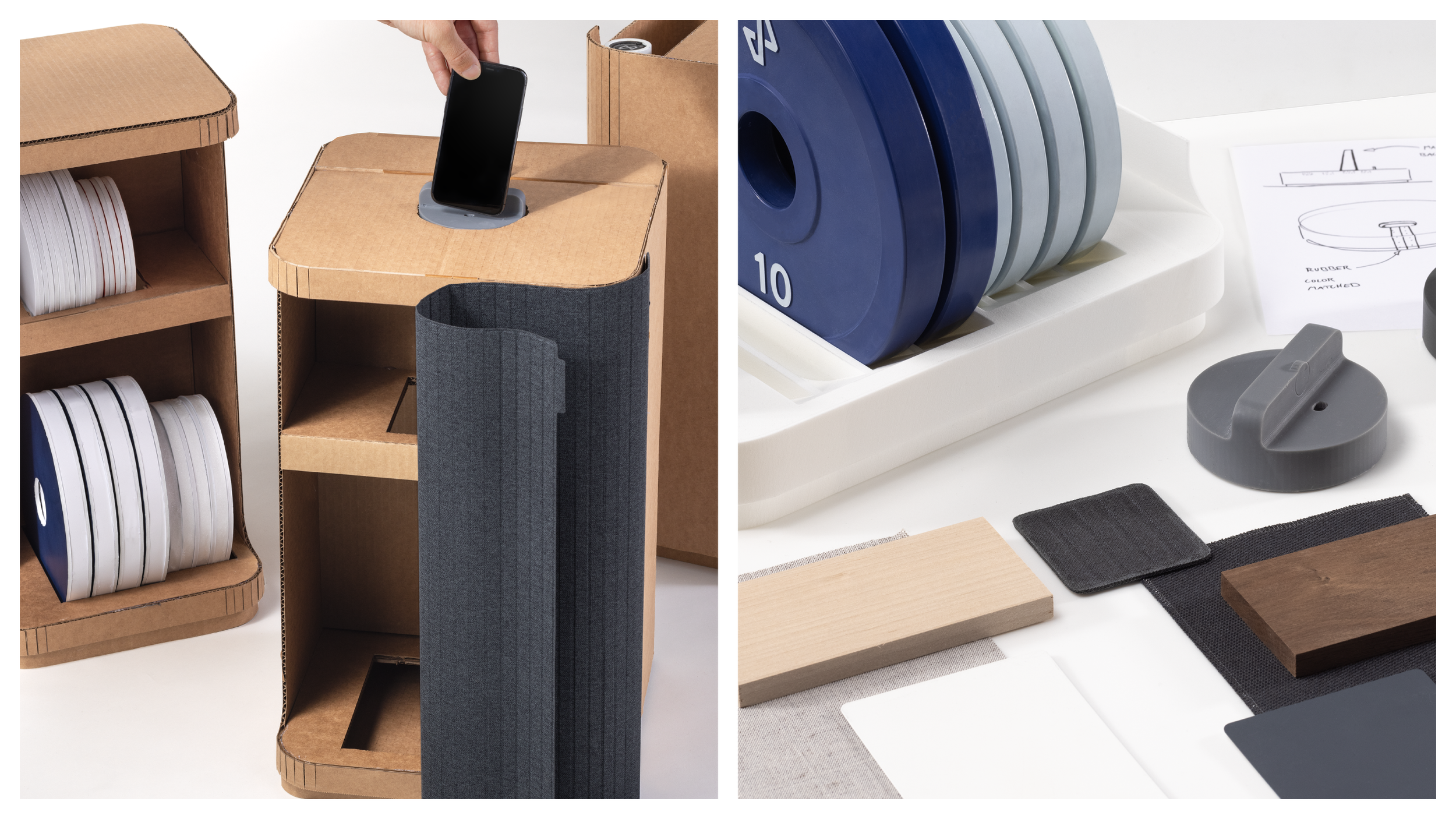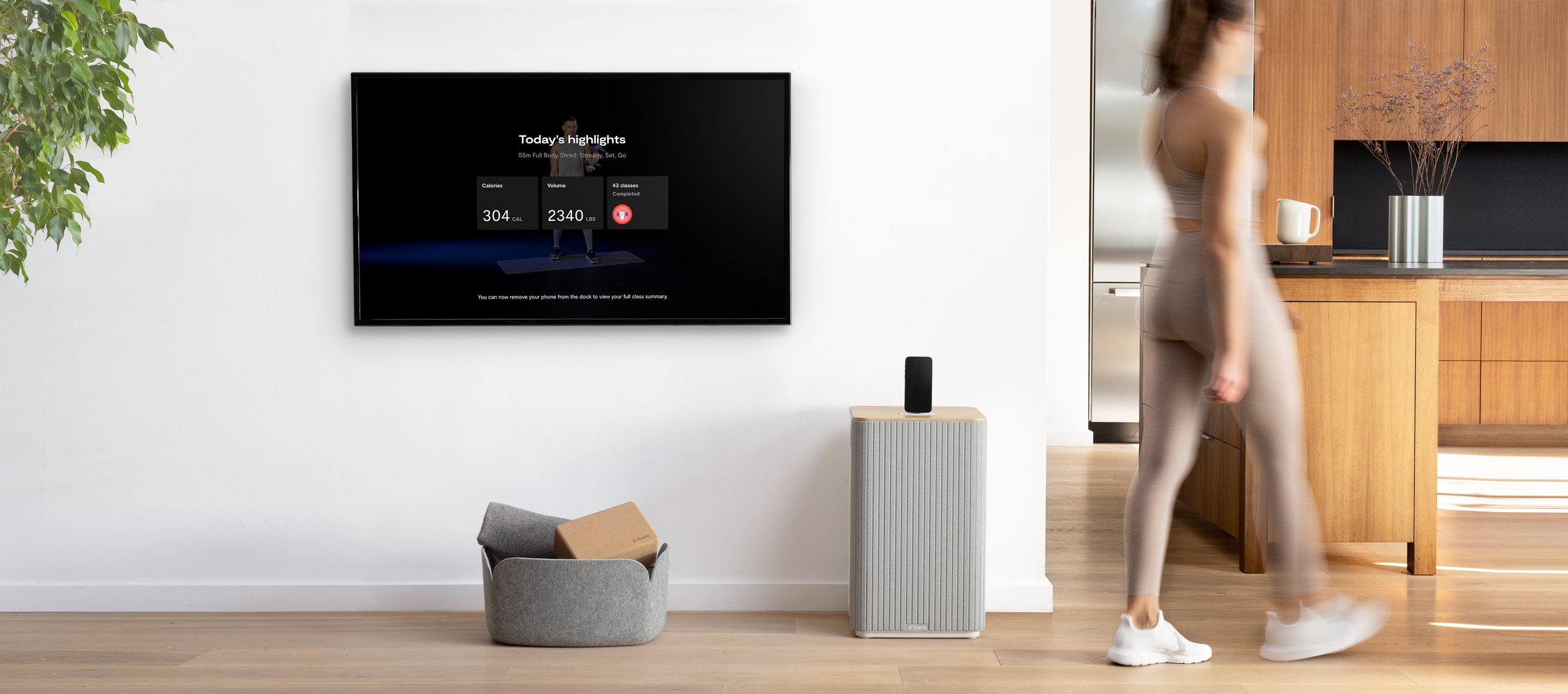To make the Studio a success, we:
- Demystified design. Like many clients, Tempo weren’t sure what they wanted (they’d know it when they saw it). To get the ideas out of their head and into the world, we got hands-on in our Open Kitchen. We used mood boards, sketches, full-scale drawings, and multiple cardboard models to test smart ways of storing weights and accessories. ‘It’s a phenomenal process,’ Moawia told us, ‘because you truly want to understand what we need. I remember you created different geometries and shapes, to say: is this what you were imagining? And every time, whatever I thought we were going to get, we came out with something better.’
- Saw things from their perspective. There’s no point designing something that’s stunning but unrealistic – something that will cost millions in R&D to actually make. That’s why we presented options based on manufacturing processes we knew would be available and affordable for a startup. So, using bent aluminum gave us the look of high-end furniture while keeping costs down.
- Talked it over (and over…). Naturally there were plot twists: healthy tension around budgets, timelines. The solution? We talked. We asked questions. And we really listened. Moawia remembers a moment we earned his trust: ‘I’d given loads of feedback, and in the next round you just nailed it. With other agencies, maybe one of the ten issues would have been resolved. But this was everything. I saw the final product and thought, yep, that’s it.’ Our open conversations showed Tempo that, when we pushed back, it was only ever to protect their brand.
Since launch, the Studio has set pulses racing. Its Olympic-grade equipment satisfies elite athletes and beginners alike. According to a survey of 1,300 users, design was one of the main reasons they became devotees. We were thrilled – because, as partners now, we cared deeply about Tempo’s success. Making their idea a reality was, for us, a dream come true.


